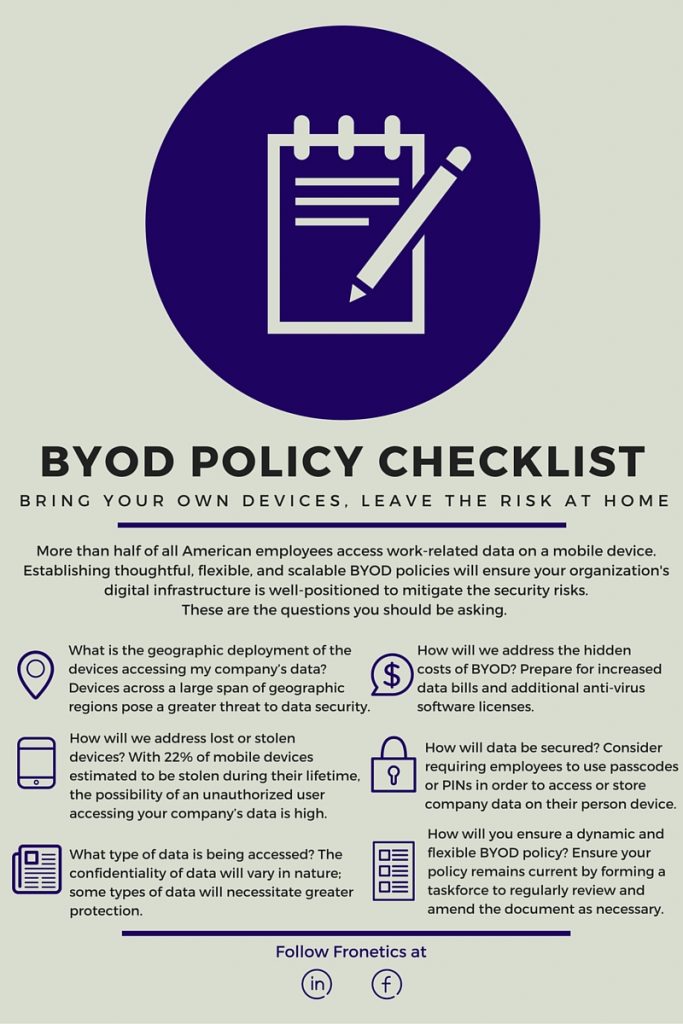
by Elizabeth Hines | Sep 29, 2015 | Blog, Strategy, Supply Chain

Across the globe, many industries are seeing aftermarket services outperforming the general market. We can point to many reasons for this occurrence: the tendency for aftermarket services to remain stable in trying times, buyers remaining flush with cash, competition among buyers driving valuations higher with historically low pricing, and buyers making strategic purchases to focus on supplementing growth of their own businesses by acquisition. Regardless of the reason why, investors have become increasingly interested in the aftermarket sector and the implications of this are significant. These deals have the power to change the market, alter customer base, and challenge companies’ competitive positions.
This is a far different story from just four years ago when an article ran in the New York Times Dealbook section by Stephen Davidoff titled, “For Private Equity, Fewer Deals in Leaner Times.” Davidoff’s article listed the primary forces that drove turbulence in that marketplace. At that time, there were too few “good” merger and acquisition opportunities, “deals” were greatly overpriced, and there were fewer sellers in the market (and the ones that were making themselves available are being snatched up by strategic buyers). But what was most interesting, and what I’ve been tracking since then, was that the private equity industry’s biggest problem was having too much money to invest. You read that correctly — too much money to invest.
When I read the phrase “too much money to invest,” it got me thinking about the hi-tech aftermarket services industry and how underserved it had been from a private equity standpoint. In the hi-tech aftermarket industry in particular, there were, and still are, plenty of really good platform companies with strong footholds in service or geographic niches that truly make them unique and valuable. What they typically lack, though, are the funds and guidance that a responsible and possibly patient private equity firm can offer. Not only do these platform companies in the high-tech aftermarket services space make for attractive investments, but it seems to me that the financials in these “niche companies” are there to support private equity interest, as well. These businesses typically have gross margins in the 35-40 percent range and net margins that are really attractive when compared with the overall hi-tech space. Combining or rolling up companies with expertise in adjacent service and/or geographic areas into a “newco” with broader reach and a deeper service offering will surely deliver financial results that private equity would consider better than not investing. The high-tech aftermarket services space is a fractionalized marketplace with accomplished participants, quality customers, and better than traditional financials when compared with the overall industry averages. And private equity firms have started to realize these points. To this, I say bravo, but there’s still lots of money that needs to be put to work.

by Fronetics | Sep 24, 2015 | Blog, Content Marketing, Marketing, Strategy

Outsourcing isn’t new to the business world. It goes back as far as the Industrial Revolution. Before then, it was common practice for businesses to perform all functions of product and service delivery, from product manufacturing through to product delivery. Sometime in the mid-1800s, independent architects, engineers, and legal professionals began to operate in larger U.S. cities taking on project-based work for a number of clients.
More than a hundred and fifty years later, outsourcing has become a staple business tool, offering benefits for employees and employers alike. Employers enjoy a reduction (or cost savings) in operating costs, improve their focus on core competencies, and employees are free to concentrate on their highest and best use.
With tech now advancing faster than ever, your business should be looking to leverage outsource partners to support your digital efforts.
Here are our picks for 6 digital and content marketing tasks you should consider outsourcing:
1. Strategy
A 2014 study of B2B marketers found that companies who have a documented content strategy in place are more likely to consider their efforts to be effective than companies who do not have a documented strategy in place (60 percent vs. 11 percent).
Identify an outsource partner that can deliver a content strategy that is aligned with your business goals and objectives and one that is results driven.
2. Content creation
Effective content is not only aligned with your business goals and objectives, it is also quality content. Finding an outsource partner that excels at content creation drive profitable customer action. When it comes to finding the right outsource partner, put a premium on quality content, and remember the adage: you get what you pay for.
3. Social media
It’s important to recognize social media as the important business tool it is. As such, you should draw on the expertise of a social media outsourcing partner. These firms know what works and what doesn’t because they’re active every day on multiple platforms managing accounts for multiple clients. And it’s not just posting every now and then. A good social media partner will craft and publish great original content, but they’ll also curate great content from relevant sources, like industry partners. Outsourcing these tasks to the pros helps build a strong following and brand awareness for your company.
4. Web development and design
Because your company’s website is the primary digital tool of communication with customers and prospects, it literally pays to have web design and development functions performed by a knowledgeable professional. Hosting that capability in-house can be costly, though. Besides saving you thousands on employee compensation, outsource partners can often bring with them niche specialties, for instance, something like usability engineering isn’t something you would necessarily get from an in-house generalist.
5. eCommerce
Focus on your core product offerings rather than investing time, money, and resources into building and maintaining an eCommerce platform. Because it receives and stores sensitive information, eCommerce platforms need to be constantly updated and secured. Couple that with product line changes, future business growth, and changing platform needs, and it quickly becomes a full-time job that comes with a hefty in-house expense.
6. Projects that are outside your scope of expertise
It’s possible that projects will come up that require a skill set, like graphic design, which lies outside your company’s range of expertise. It’s far better to find a partner with this expertise rather than try to create an on-demand capacity to provide the service. Your clients will benefit from stellar work performed by a knowledgeable practitioner and you’ll enjoy cost savings by not committing to a long-term employee salary.
You may also like:
When it comes to marketing we work with our clients to create and execute strategies that drive success and elevate their brand position within the industry. Unlike other firms, we align marketing programs with business objectives and, through a data driven approach, are able to deliver results with a targeted ROI. Our team is comprised of strategists, marketing professionals, writers, designers, and experts in social media. Together we leverage our experience to increase brand awareness, position our clients as thought leaders, drive meaningful engagement with prospects and customers, and help businesses grow.

by Fronetics | Sep 23, 2015 | Blog, Logistics, Strategy, Supply Chain

Logistics is logistics is logistics– right? Wrong. The direction the product is moving in the supply chain – forward or backward – makes a difference.
Forward logistics, or the forward supply chain, is all about getting the product to market. In contrast, reverse logistics, or the aftermarket supply chain, is inclusive of events that move the product at least one step back in the supply chain. That is, reverse logistics is inclusive of activities that move goods from the consumer to the distributor or the manufacturer, and is inclusive of operations related to the reuse of products and materials.
The direction in which the product is moving matters. Companies that attempt to employ the same strategy for their reverse logistics process as they do for their forward logistics process do so at their peril.
The forward supply chain has its challenges. The forward supply chain has risks and it has surprises. However, the forward supply chain is more predictable and more certain than the aftermarket supply chain.
There is a greater level of uncertainty and predictability in reverse logistics. Because of this, when it comes to reverse logistics, flexibility needs to be a key component of your strategy.
Specifically, in forward logistics the product itself, the quality of the product, and the volume of the product are known and are relatively easy to forecast. Likewise, rules and regulations are fairly straightforward and uniform, and the value of the product is known.
When it comes to reverse logistics there are many unknowns. The product, the volume of the product, the quality of the product, and the value of the product are difficult to forecast. Rules, regulations, and restrictions are constantly evolving and vary by state, country and region. Moreover, the visibility and speed at which it is necessary for the aftermarket supply chain to move is vastly different than that of the forward supply chain.
It is important to remember that when it comes to the supply chain one size does not fit all. Incorporating flexibility into your aftermarket supply chain strategy is essential to your success.
This post originally appeared on Electronics Purchasing Strategies.

by Fronetics | Sep 22, 2015 | Blog, Logistics, Strategy, Supply Chain

The perception of the reverse logistics industry has shifted over the last several years. Reverse logistics has gone from being viewed as an afterthought to a necessary evil to being recognized as a wealth of opportunity. This shift has occurred as a result of several factors including: shortened product lifecycles, increased regulations and standards, consumer demand for corporate responsibility, and an increase in razor-thin margins. Equally important in the industry’s makeover – companies have come to understand and to realize the benefits of reverse logistics such as a reduction in costs, a revenue stream, and as a way to enhance customer loyalty.
Unfortunately when choosing a solutions provider, many companies fall prey to the assumption that a certain level of compliance and data security are givens. More often than not; however, the reality is that the service provider does not offer the level of compliance or data security assumed by the customer – and more often than not, the level that is offered by the service provider is inadequate. When due diligence is left to assumptions companies pay dearly.
Specifically, faulty assumptions regarding certain levels of compliance and data security provided via a service provider leave the customer open to lawsuits and fines as a result of non-compliance and leave the door open for data leakage and theft. The financial costs associated can be astronomical. Moreover, the company and the brand can take a significant hit resulting in a decline or even loss of customers and customer loyalty. In short, choosing a reverse logistics service provider that does not offer the compliance and data security necessary for your company can negate any gains realized as a result of your company’s reverse logistics strategy.
When selecting a reverse logistics service provider don’t make assumptions; don’t take the route of complacency. Instead, ask questions, conduct due diligence, and make sure that the level of service provided goes beyond meeting your needs – the service provider should be able to exceed your company’s needs.
When selecting a reverse logistics service provider, look for a provider who has network and standards in place which ensure global success. What does this look like? Arrow Value Recovery is the gold standard. Arrow provides uniform standards and quality controls. Unlike some service providers who default to the lowest common denominator, Arrow providers customers with consistent levels of service –globally. Moreover, Arrow ensures that every step of the recovery, data sanitization, and reuse and recycling process is not only transparent but is also 100 percent auditable.
Taking the time to thoroughly vet a reverse logistics service provider is essential. Don’t make assumptions and don’t default to complacency. Did you know that an estimated 70 percent of data breaches come from computers that are offline – typically computers that have been disposed of by the equipment owner? Don’t assume that your reverse logistics provider is offering your company the level of compliance and data security necessary – verify the facts.
This post was originally published on Electronics Purchasing Strategies.

by Fronetics | Sep 21, 2015 | Blog, Marketing, Strategy, Supply Chain, Website Development
Last updated: November 18, 2024
Having a mobile-friendly website isn’t just an option in 2025 — it’s a necessity. With mobile devices accounting for over 60% of web traffic and search engines increasingly considering mobile-friendliness in results, supply chain businesses can’t afford to neglect the mobile user experience. This guide will walk you through the essential steps to optimize your supply chain website for mobile users in 2025.
Why Mobile-First Matters More Than Ever
The shift to mobile-first design has been dramatic over the past few years. Users now expect seamless experiences across all devices, and search engines prioritize mobile-friendly websites in their rankings. A poorly optimized mobile site can lead to:
- Higher bounce rates
- Lower conversion rates
- Decreased search engine rankings
- Reduced customer trust
- Lost business opportunities
Essential Mobile Optimization Strategies for 2025
1. Implement Responsive Design 2.0
While responsive design has been around for years, modern implementations require more sophistication. Your website should:
– Use fluid grid systems that adapt to any screen size
– Implement dynamic typography that scales properly
– Utilize container queries for more granular control
– Employ adaptive loading patterns based on device capabilities
– Leverage CSS subgrid for complex nested layouts
2. Optimize Performance
Speed is crucial for mobile users. Focus on these performance metrics:
– Aim for a Core Web Vitals score in the top 75th percentile
– Keep First Contentful Paint (FCP) under 1.8 seconds
– Ensure Largest Contentful Paint (LCP) occurs within 2.5 seconds
– Maintain Cumulative Layout Shift (CLS) below 0.1
– Optimize Time to Interactive (TTI) to under 3.8 seconds
3. Embrace Progressive Web App (PWA) Features
PWAs continue to bridge the gap between web and native apps. Implement:
– Offline functionality
– Push notifications
– App-like navigation
– Home screen installation
– Background sync capabilities
4. Focus on Touch-Friendly Navigation
Mobile users interact with their devices differently than desktop users. Ensure your design accounts for:
– Touch targets of at least 44×44 pixels
– Adequate spacing between interactive elements
– Gesture-based navigation options
– Easy-to-reach navigation elements
– Clear visual feedback for interactions
5. Optimize Media for Mobile
Media optimization is crucial for mobile performance:
– Implement responsive images using srcset and sizes attributes
– Use next-gen image formats like WebP and AVIF
– Employ lazy loading for images and videos
– Optimize video delivery with adaptive bitrate streaming
– Consider reduced motion preferences
6. Implement Smart Content Prioritization
Mobile users need quick access to essential information:
– Use progressive disclosure techniques
– Implement collapsible sections for lengthy content
– Prioritize critical content above the fold
– Use accordion patterns for complex information
– Consider implementing content parity with context
Advanced Mobile Optimization Techniques
1. Leverage AI-Driven Personalization
Modern mobile experiences can benefit from AI:
– Implement predictive loading based on user behavior
– Use AI to optimize image compression
– Employ machine learning for content recommendations
– Utilize AI-powered chatbots for mobile support
– Implement smart search with natural language processing
2. Focus on Mobile Security
Security concerns are paramount for mobile users:
– Implement biometric authentication options
– Use HTTPS everywhere
– Enable two-factor authentication
– Implement Content Security Policy (CSP)
– Regular security audits for mobile-specific vulnerabilities
3. Optimize for Voice Search
Voice search optimization is increasingly important:
– Implement structured data markup
– Focus on conversational keywords
– Optimize for featured snippets
– Ensure fast loading times for voice results
– Create voice-friendly navigation options
Testing and Monitoring
Regular testing is crucial for maintaining mobile optimization:
Tools to Use:
- Google Mobile-Friendly Test
- Chrome DevTools’ Device Mode
- GTmetrix Mobile Testing
- Real Device Testing Labs
- User Session Recording Tools
Metrics to Monitor:
- Mobile conversion rates
- Page load times on different devices
- Mobile-specific bounce rates
- User engagement metrics
- Mobile search rankings
Common Mobile Optimization Mistakes to Avoid
1. Neglecting Mobile Forms
Keep forms short and simple
– Use appropriate input types
– Implement auto-fill where possible
– Provide clear error messages
– Use smart keyboards for different input types
2. Poor Touch Targets
– Avoid placing touch targets too close together
– Make buttons and links easily tappable
– Provide clear visual feedback
– Consider thumb zones in design
– Test with different hand sizes
3. Ignoring Mobile Context
– Consider user location and context
– Optimize for on-the-go usage
– Account for varying network conditions
– Design for different lighting conditions
– Consider device capabilities
Future-Proofing Your Mobile Strategy
As we move forward in 2025, consider these emerging trends:
– 5G optimization opportunities
– Augmented Reality (AR) integration
– Foldable device compatibility
– AI-driven personalization
– Enhanced privacy features
Conclusion
Mobile optimization is an ongoing process that requires regular attention and updates. By implementing these strategies, you’ll create a mobile-friendly supply chain website that not only meets current standards but is also prepared for future developments. Remember that mobile users have different needs and expectations than desktop users, and your website should cater to both audiences effectively.
Regular testing, monitoring, and updating your mobile optimization strategy will ensure your business website remains competitive and provides an excellent user experience across all devices. As mobile technology continues to evolve, staying current with best practices and emerging trends will be crucial for maintaining a strong online presence.
Is your business making the most of its web presence?
Get a free website audit
Discover untapped opportunities and places you may be losing leads with our free website audit.
![How to Keep Your Company Data Safe in a BYOD Environment [Infographic]](https://fronetics.com/wp-content/uploads/2024/10/BYOD-policy-checklist-800x675.jpg)
by Fronetics | Sep 16, 2015 | Blog, Data Security, Data/Analytics, Marketing, Social Media, Strategy
While the Bring Your Own Device (BYOD) concept has quickly gained traction in the business world, many companies have been slow to address its threat to their data privacy. Even for companies that have recognized the need to prioritize digital security, many have struggled to establish policies that support personal device use while protecting their data. And that’s risky given the high level of connectedness many employees now enjoy – with or without formal guidelines or policies. It leaves businesses open to enormous potential for data leaks.
To avoid the potential leak of data, your company should establish policies on the use of personal and mobile devices such as tablets, smart phones, and laptops that may be used to access your company’s computing and communications systems. Here are six crucial items to consider as you set out to mitigate the risks of your own BYOD culture.








![How to Keep Your Company Data Safe in a BYOD Environment [Infographic]](https://fronetics.com/wp-content/uploads/2024/10/BYOD-policy-checklist-800x675.jpg)
